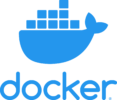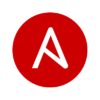In virtually every business technology scenario, a disconnect develops between the teams that develop the tools and the teams that use them daily, either due to mismanaged priorities or a total lack of communication and accountability. DevOps, or the methodology for combining the iterative plans and communication of both development and IT operations teams, works to bridge the gap between teams that traditionally think and work in silos. As DevOps practices grow in popularity, a number of DevOps tools and software solutions have entered the market to reinforce this enterprise relationship through automation, democratization, and communication.
Read Next: The Future of Network Management with AIOps
Finding the Right DevOps Solution for Your Enterprise
- What is DevOps?
- Types of DevOps Tools
- Top DevOps Market Solutions
- DevOps Enterprise Best Practices
- DevOps Benefits for Enterprises
What is DevOps?
DevOps is the idea that although their skill sets and daily work look different, development and IT operations teams work better together because their input determines the output of the other team. Without the feedback of the operations team that uses the tool, the development team won’t evolve the most relevant solutions or troubleshoot the most urgent bugs. Without the expertise of the development team, the operations team will not always know what’s possible to develop and automate in their toolkit. With a DevOps approach, these disparate teams come together on an iterant basis to ensure that software is developed to optimize for current needs and to brainstorm for future needs.
Many people falsely assume that DevOps is always a type of software, when in reality, it’s more of a methodology that supports technology development and deployment. The following list of tools optimizes several facets of DevOps collaboration, but it’s important to remember that DevOps is more about the methodology and the culture it creates for the enterprise.
Types of DevOps Tools
Many enterprises that adopt the DevOps methodology also adopt tools that enable real-time collaboration and updates, co-management of configuration, and transparent access to security and compliance monitoring. Some of the main types of tools on the market are:
- Version control: helps teams to track historical changes to code
- Container management: organizes and optimizes containers used for container-based application development
- Application performance monitoring (APM): applications and processes that allow users to check performance metrics and alerts for applications
- Configuration management: primarily focuses on managing and configuring the source code that makes a development project work
- CI/CD Automation: continuous integration and continuous delivery are the focuses of these tools that automate software deployment
- Collaboration platforms: either traditional chat platforms or Kanban-style boards used for group communication
More on Containerization: Virtualization vs. Containerization: What is the Difference?
More on APM: The Importance of Application Performance Management (APM) for Cloud-based Networks
Top DevOps Market Solutions
Docker 
With its tagline “built for developers, by developers,” Docker introduced its industry standard container setup to the market in 2013. Docker offers one of the most popular container management solutions on the market, with millions of developers optimizing their open-source software development through collaboration in the Docker Community. Docker’s ultimate goal is to eliminate the application development problem where certain apps work better on certain machines or operating systems.
Type: Container management
Features:
- Docker Desktop native application is compatible with Mac and Windows
- Docker Hub for sharing container images with internal teams and external users
- Frequently updated public roadmap for Docker Products and Services on GitHub
- Docker CLI interface for container management commands
- Docker CLI plugins for building, testing, and sharing containerized applications and microservices
Top Pro: Play with Docker is a strong, interactive testing environment for Docker commands. It runs on a Linux terminal with no downloads necessary.
Top Con: Documentation for new or updated solutions does not always keep up with changes in Docker development.
Red Hat Ansible 
The Red Hat Ansible suite of configuration management, application deployment, and network automation tools is a top solution for many enterprises, most loved for its simplicity. Ansible’s tools look at both sides of the equation and work to address development-side concerns and operations-side concerns simultaneously through feedback loop acceleration, optimized bug detection and fixes, and an increased focus on democratizing system knowledge and configuration codes for both teams. Beyond creating a platform that makes configuration management a team effort, Ansible also threads security features throughout the tool.
Type: Configuration management, application deployment
Features:
- Ansible Playbooks and YAML as the first “human-readable” automation language
- automate the entire application lifecycle and continuous delivery pipeline
- Manages all systems and their relationships for multi-tier deployments
- Compatible with multiple sources of truth, with sources like EC2, Rackspace, and OpenStack
- Able to create identical QA, dev, and prod environments for deployment preparation
Top Pro: Ansible Playbooks offer templates and how-tos in plain English, making it possible for all users to understand and manage configuration codes.
Top Con: Ansible offers enterprise solutions, such as Enterprise Tower and Premium Tower, but competitors like Puppets and Chef are more seasoned enterprise partners.
Puppet 
Unlike many of the other solutions on this list, Puppet develops a platform-specific solution for enterprises through infrastructure as code, but they also offer consulting services for organizations that want to better align with the DevOps methodology. They start with a DevOps maturity assessment called “CAMS” (Culture Automation Measurement Sharing) to see where your team is starting from in building a DevOps culture. The Puppet team then works with their customers on a DevOps toil assessment which identifies needs and creates a concrete plan for an organization’s deployment needs. Throughout an organization’s work with Puppet, they can also access a Puppet Solutions Architect for real-time coaching on their DevOps implementation.
Type: Configuration management, infrastructure automation, consulting
Features:
- Choice between agent-based or agentless automation
- Model-based and task-based scaling
- Consulting with assessment and coaching support from the Puppet team
- Puppet Forge workflow automation
- Puppet Comply security and compliance enforcement
Top Pro: Puppet publishes the State of DevOps Report, recognized as the longest-running and most widely referenced DevOps research in the industry, making them a recognized leader in both innovation and partnerships.
Top Con: As an open-source tool, Puppet Enterprise offers little in the support arena, which is especially difficult for users who aren’t familiar with the Ruby programming language.
Bamboo 
Bamboo, a member of the Atlassian suite of business technology, is a server that focuses on continuous integration, continuous delivery/deployment, and transparency in the production life cycle. Bamboo uses agents for its integrations and deployments, and users pay based on the number of agents that they need. Customers can choose between local agents run on a Bamboo server or remote agents run on any computer or server environment. Although the tool is helpful on its own, it works best when used in partnership with other Atlassian products like JIRA, BitBucket, Confluence, and Crowd.
Type: CI/CD automation
Features:
- Bamboo Data Center continuous delivery pipeline, with Docker and AWS CodeDeploy
- Agile development focus with automated workflows
- Built-in disaster recovery features
- Opsgenie integration for incident investigation and troubleshooting
- Knowledge Base, Atlassian Community, and technical support available
Top Pro: Bamboo’s development workflow sets it apart; its integration with BitBucket and JIRA makes for a transparent, holistic view of the production and deployment lifecycle.
Top Con: Bamboo integrates well with tools in its portfolio and other Java tools, but users have had some trouble integrating with non-Java tools.
GitHub 
Known as the tool “where the world builds software,” GitHub is an open-source community where millions of developers communicate about and build new software solutions. GitHub is also a strong DevOps solution, with products like Actions and Packages that make CI/CD automation, version control, and communication possible across teams. Organizations that want to create a private space within GitHub for DevOps projects can subscribe to GitHub Enterprise and Codespaces that make that collaboration possible. GitHub attracts many of its customers because it allows them to build, test, and deploy their objects all in the GitHub space, which greatly reduces time-to-deployment.
Type: Version control, CI/CD automation, collaboration platforms
Features:
- 200+ million repositories, with unlimited public and private repository usage
- Real-time code updates and collaboration in the cloud
- Mobile version allows for code review and merge, notification management, and repository browsing
- Choice between GUI GitHub Desktop and command line GitHub CLI
- Codespaces configurable dev environment with Visual Studio Code desktop editor included
Top Pro: The pull request feature focuses on the entire product life cycle, making it easy to collaborate and sign off on code experiments, bug fixes and troubleshooting, and new feature ideas.
Top Con: Notifications and new changes are difficult to navigate in the user interface.
Splunk 
Splunk is an analytics tool in the DevOps space, but unlike most of its competitors that analyze projects in each part of their iterant life cycles, Splunk’s real-time insights survey the project’s life cycle both in parts and holistically. Many organizations rely on Splunk to assist with continuous delivery solutions and visibility when deploying projects on platforms like the AWS cloud. Splunk offers somewhat limited solutions for CI/CD automation and configuration management, but through its Splunkbase apps, it integrates with other DevOps tools like Bamboo, Puppet, and Jenkins.
Type: Deployment monitoring, server monitoring, application performance monitoring (APM)
Features:
- Automated observability with real-time visibility into the full stack
- Correlated insights across the stack for low latency analytical performance
- Single pane of glass metrics and monitoring setup
- Splunk Infrastructure Monitoring for real-time, contextual infrastructure monitoring and troubleshooting
- Splunk APM for real-time, full-fidelity tracing on trace data alerts
- Scalable telemetry engine for observability data and OpenTelemetry instrumentation for data ingestion management
Top Pro: The tool is highly customizable. Logs can be customized to company specifications and dashboards are user-friendly.
Top Con: Splunk comes at a higher baseline cost than similar tools, which may limit it to enterprises with larger budgets.
Slack 
Although Slack is also used for more casual organizational communication needs, the application excels as a collaborative tool for DevOps projects. Private and public channels can be set up to separate teams as needed, but even within a single channel, individual threads can be started and tags can be used so that only relevant team members will be notified for a given issue. However, the format of Slack still makes it possible for new users to join the thread or chime in, making development iterations transparent and collaborative. With the ability to save files, start video calls, and adjust your notification settings as needed, Slack ensures that all users have equal access to a project. As a bonus, the Slack app directory connects the tool with several other office productivity suites and other DevOps programs, such as Atlassian, GitHub, Jenkins, ClickUp, Nagios, and Datadog.
Type: Collaboration platform, business communication platform
Features:
- “Persistent chat room” format, organized by channel topic, private groups, and direct messaging
- Users can create both open and private channels
- Image and multimedia sharing that does not diminish media quality
- Embedded video calling
- Ability to thread conversations, limiting notifications only to relevant users on the thread
Top Pro: Slack is integrated with several common business technology productivity suites and other software, making it easy to share updates across platforms through one communication channel.
Top Con: The search functionality is limited and takes time to load, making it difficult to look at older conversation threads in a production life cycle.
Jenkins 
Jenkins is one of the most popular open-source CI/CD solutions on the market that focuses most heavily on the dev side of DevOps projects. In the Jenkins automation server, developers are able to test, deploy, and make adjustments to their software in consecutive stages. Perhaps the most significant aspect of Jenkins is the developer community that the project fosters. They offer mailing lists, chats, special interest groups, Twitter forums, and Reddit forums where users can discuss and troubleshoot project points with other developers. Although this tool does not offer much to the operations team side of a DevOps model, it makes it possible for the dev side to quickly respond to and turn around project requests.
Type: CI/CD automation
Features:
- Free, open-source automation server with hundreds of assistive plugins
- Self-contained Java-based program with packages for Windows, Linux, macOS, and other Unix-like operating systems
- Distributed infrastructure across multiple machines
- Works with multiple source code repositories and with various other tools
- Automatic job and rollback controls for deployment
Top Pro: Jenkins offers an active user community with frequently updated user resources, forums, and bug fixes.
Top Con: The UI is not very user-friendly and lacks data analytics and visualization capabilities.
Chef 
Chef is a top solution with many offers in the DevOps space, as well as the DevSecOps (development, security, and operations) space. Many users start with Chef because they need assistance with configuration and infrastructure management, but many users praise the additional security features offered, such as compliance audits, patch management, and specialized GDPR knowledge. Some users think that Chef is more complicated to use than its competitors because of its emphasis on coding knowledge, but with its highly rated support staff and pre-built integrations with Docker, Kubernetes, Azure, and VMware, many of the solutions that organizations seek are still just as accessible.
Type: Configuration management, infrastructure automation, collaboration platform
Features:
- Recipes and cookbooks offer templated and repeatable configuration setups for different machines and operating systems
- Focused tools, such as Databags, for compliance and security requirements
- Open-source, uses Ruby DSL for custom code
- Configuration by code for transparency in the source control repository
- Aggregated and filterable dashboards
Top Pro: Chef has an active user community, relevant documentation, and a support team that offers auto manager support and expert active support via their Slack channels.
Top Con: Chef requires its own agent and some coding knowledge, making it a more complicated configuration setup and learning curve than its direct competitors.
DevOps Enterprise Best Practices
Even with the best DevOps tools in hand, organizations cannot successfully launch a DevOps approach without understanding the core practices of the methodology. Take these steps during every project where both the development and the IT operations teams are involved:
- Plan before you develop anything.
- Test before you deploy anything.
- Enable external and internal change management so that all relevant users are made aware of and prepared for project changes over time.
- Keep production and communication about production quick and iterative.
- Communicate transparently and hold both the development and the operations teams accountable.
- Focus on ensuring data quality at all stages of a project.
More on Data Quality: Best Data Quality Tools & Software
DevOps Benefits for Enterprises
Whether you’re using all of the DevOps tools on this list, using the methodology with your existing stack, or somewhere in between, enterprise teams across project types can benefit from a DevOps approach:
- DevOps encourages stronger team communication and defined delivery standards.
- Stronger project management and troubleshooting create a stronger product.
- Quicker, more efficient deployments make for a shorter software development life cycle.
- Data and projects are managed more transparently, which builds trust and future collaboration opportunities across teams.
- Cross-team collaboration improves change management potential and increases its success rate.
Read Next: How IT Leaders Need to Rethink Project Management in the DevOps Era












